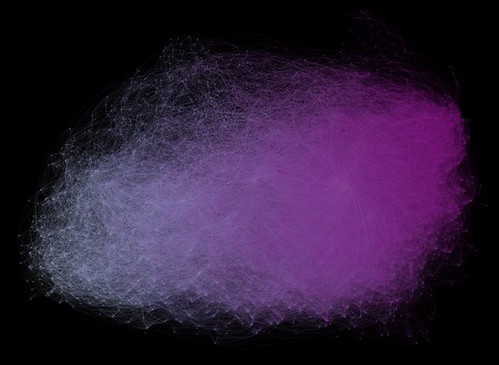Back in 2010 I wrote a piece for the National Humanities Center, Cultural Evolution A Vehicle for Cooperative Interaction Between the Sciences and the Humanities, which is online at their Forum along with comments. I have since revised it to include a section on Jockers, Macroanalysis: Digital Methods in Literary History (2013). You can download the revised version from my SSN page. I’ve placed the added section below.
* * * * *
A Start: 19th Century Anglophone Literary Culture
Let me set the stage by quoting a passage from the excellent review Tim Lewens (2014) wrote for the Stanford Encyclopedia of Philosophy:
The prima-facie case for cultural evolutionary theories is irresistible. Members of our own species are able to survive and reproduce in part because of habits, know-how and technology that are not only maintained by learning from others, they are initially generated as part of a cumulative project that builds on discoveries made by others. And our own species also contains sub-groups with different habits, know-how and technologies, which are once again generated and maintained through social learning. The question is not so much whether cultural evolution is important, but how theories of cultural evolution should be fashioned, and how they should be related to more traditional understandings of organic evolution.
Building on discoveries made by others, we can see that kind of process in a graphic that Matthew Jockers used late in Macroanalysis: Digital Methods in Literary History (2013), though that’s not what Jockers had in mind in that particular investigation. He was working with a corpus of 3346 Ninetheenth Century novels by American, British, Irish and Scottish authors and was interested in tracking influence among them. It is one thing to track influence among a handful of texts; that is the ordinary business of traditional literary history. You read the texts, look for similar passages and motifs, read correspondence and diaries by the authors, and so forth, and arrive at judgements about how the author of some later text was influenced by authors of earlier texts.
It’s not practical to do that for over 3000 texts, most of which you’ve never read, nor has anyone read them in over 100 years. Jockers was using recently developed techniques for analyzing “big data,” in this case, a pile of 19th Century Anglophone novels. Without going into the details – you can find most of them in Jockers, pp. 156 ff.) – Jockers had the computer ‘measure’ each text on almost 600 different traits and then calculated the pair-wise similarity of all the texts. He then tossed out all values below a certain relatively high threshold and then had the computer create a network visualization of the remaining connections. Each text is represented as a ‘node’ in the network and the similarity between two texts is represented by the ‘edge’ (of link) connecting them. The length of the edge is proportional to the degree of similarity. Jockers then had the computer create a visualization of this network, where each text would be next to similar texts in the resulting image. Here’s that image (Figure 9.3 in the book, p. 165, color version from the web):
It turns out that the visualization routine laid the graph out more or less in chronological order, going from older to newer, left to right. Note that there was no temporal information in the data from which that graph was derived (pp. 164-65):
The fact that they line up in a chronological manner is incidental, but rather extraordinary. The chronological alignment reveals that thematic and stylistic change does occur over time. The themes that writers employ and the high-frequency function words they use to build the frameworks for their themes are nearly, but not always, tethered in time. At this macro scale, style and theme are observed to evolve chronologically, and most books and authors in this network cluster into communities with their chronological peers. Not every book and not every author is a slave to his or her epoch.
On Jockers’ first sentence, it’s neither incidental nor extraordinary IF an evolutionary process regulates cultural change. For evolution proceeds through “descent with modification,” as Darwin put it, and that goes for cultural as well as biological evolution. If a later individual is modified from its immediate predecessors, it will in fact resemble them a great deal; the modifications do not change the basic character of the descendants.
As his language indicates, Jockers wasn’t looking for THAT result. It surprised him. Though he alludes to cultural evolution here and there in the book, he rejected it as a basic premise of his investigation (pp. 171-172). The evolutionary interpretation is mine, not his.
We must further realize that that interpretation is an assertion about the collective mentality. Jockers wasn’t examining the minds of millions of 19th century readers of English-language novels in Britain and America, but the history of those novels is a function of the tastes and interests of those readers. Those books wouldn’t have been written if publishers didn’t think they could see them to the public. Those tastes changed gradually, with the themes and styles of novels appealing to those tastes changing gradually as well.
The study of cultural evolution is thus the study of collective mentality. We are interested in the collective psyche. How can we think of the collective psyche without falling into hopeless mysticism?

No comments:
Post a Comment